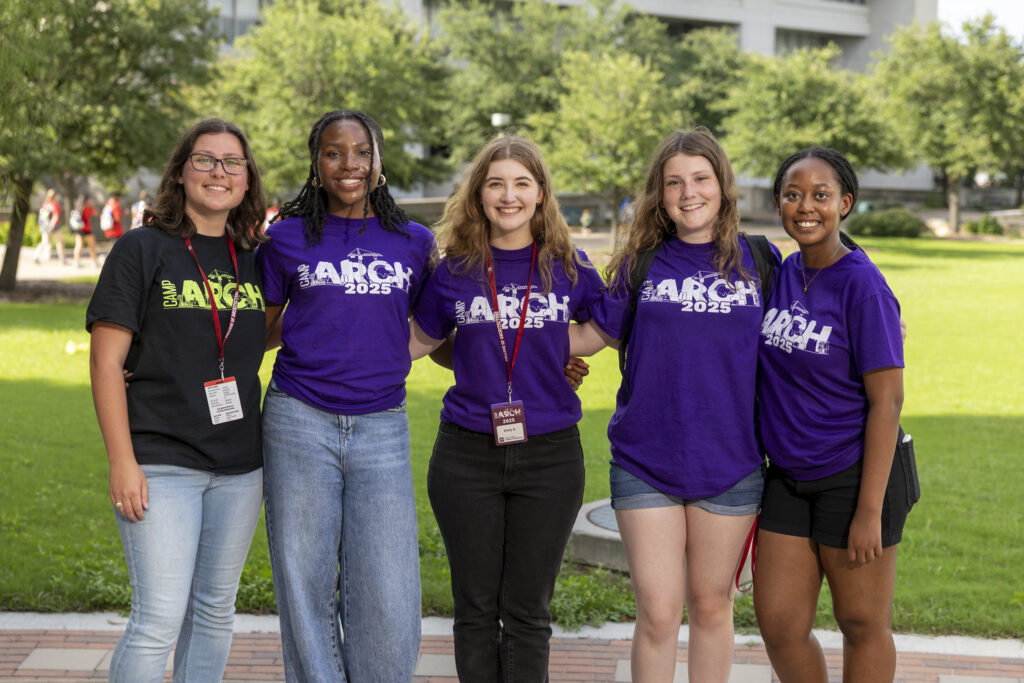Camp ARCH Hosts High School Innovators to Plan, Design, Build
Each July, the Langford Architecture Center comes alive.
In one studio, high schoolers arrange triangles of chipboard into twisting architectural models, some shaped like dragons. Not far away, others in hard hats and safety vests review job site plans before heading out to real-world construction tours. Across campus, landscape designers imagine greener public spaces, while future planners pitch revitalization proposals at City Hall.
This is Camp ARCH: a weeklong immersion into design, planning and building that draws out big ideas from students already thinking like professionals.
Hosted by the Texas A&M College of Architecture, the camp welcomed about 100 rising juniors and seniors — its largest cohort yet — as demand continues to grow. Students explored four disciplines: architecture, landscape architecture, urban planning and construction science.
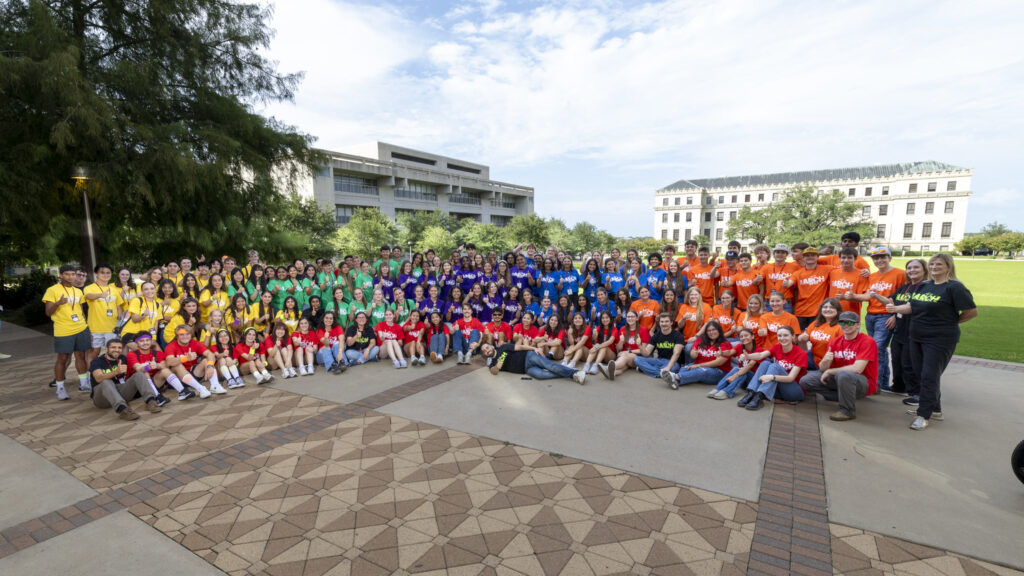
Campers came from across Texas and beyond. “They all came together with a common interest in our professional built environment fields,” said Associate Dean for Academic Affairs Shelley Holliday.
In each track, students tackled real-world projects under the guidance of Texas A&M faculty. Current Texas A&M students served as counselors, mentoring campers and offering a firsthand look at college life.
“They get to learn about these things, but they get to do those things just like an Aggie would,” said camp director Jordan Luna.
Exploring the Built World
This year marked the first time Camp ARCH offered a dedicated urban planning track, and its students jumped into a real-world challenge: revitalizing Downtown Bryan. After touring the area and meeting local stakeholders, campers developed proposals to strengthen the area’s future.
“We got to go around Downtown Bryan and just interview a bunch of people,” said Jocelyn Wooten, 17. She said her favorite part was meeting with planners, architects, emergency management professionals and even representatives from Destination Bryan.
By the week’s end, students presented their ideas to city staff at College Station City Hall. Officials praised the campers’ professionalism and creativity.
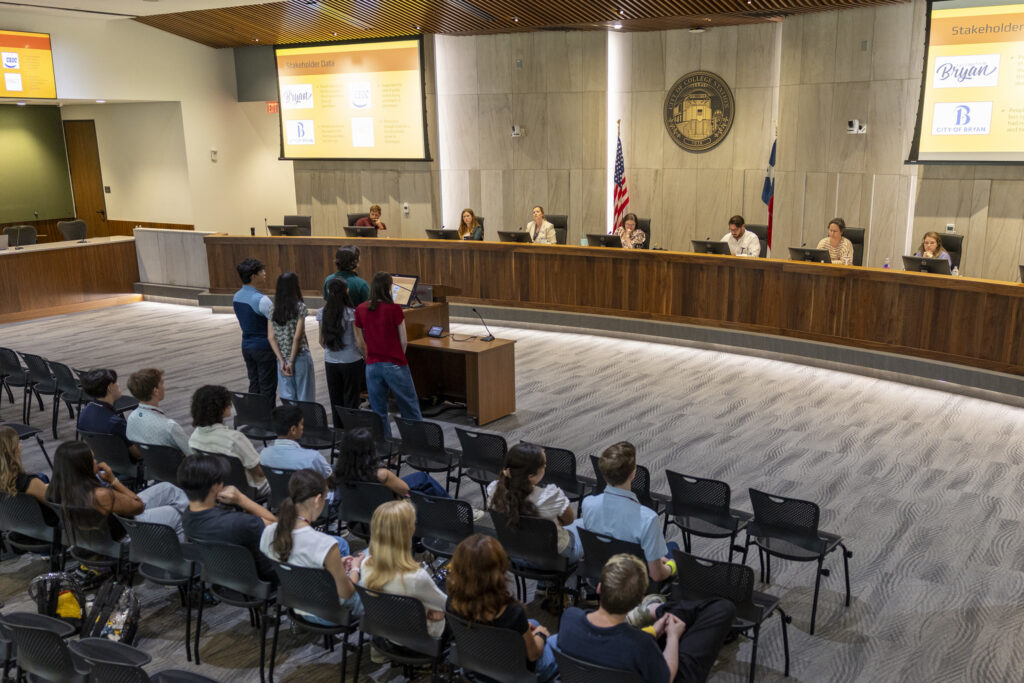
Associate Professor Justin Golbaibai, who taught the urban planning group, said the project blended real-world complexity with academic mentorship and may serve as a model for future college coursework.
While urban planners tackled revitalization, architecture students turned to the future. In studio, they explored digital modeling and AI tools to reimagine design possibilities. One project began with a snake-like chain of chipboard triangles. After scanning it into 3D software, students reshaped it into a mountainous cityscape, layered with pillars and digital textures.
“It’s so interesting to see how we all started with the same materials, but then everyone has different ideas completely … It just ties into our individual personalities,” said Adora Akiode,17.
That creative individuality wasn’t limited to the studio. Over in construction science, campers traded models for hard hats to see how planning and building take shape on real job sites.
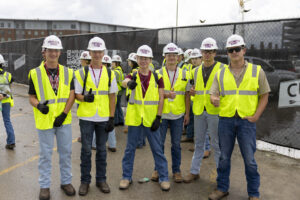
Skylar McFarland, 17, said her favorite part of camp was learning how architects, engineers, safety experts and even subcontractors come together to create. “I didn’t know anything about it before coming into the camp really.”
Campers also earned their OSHA 10 certification, a valuable credential for future jobs or internships, Luna said. The training was taught by Instructional Professor Anne McGowan, better known as “Safety Anne.”
During CPR training, she blasted “Staying Alive” and had students clap to the beat. “She knows the balance between having fun and getting you engaged, but also taking her job very seriously,” McFarland said.
Learning from the Best
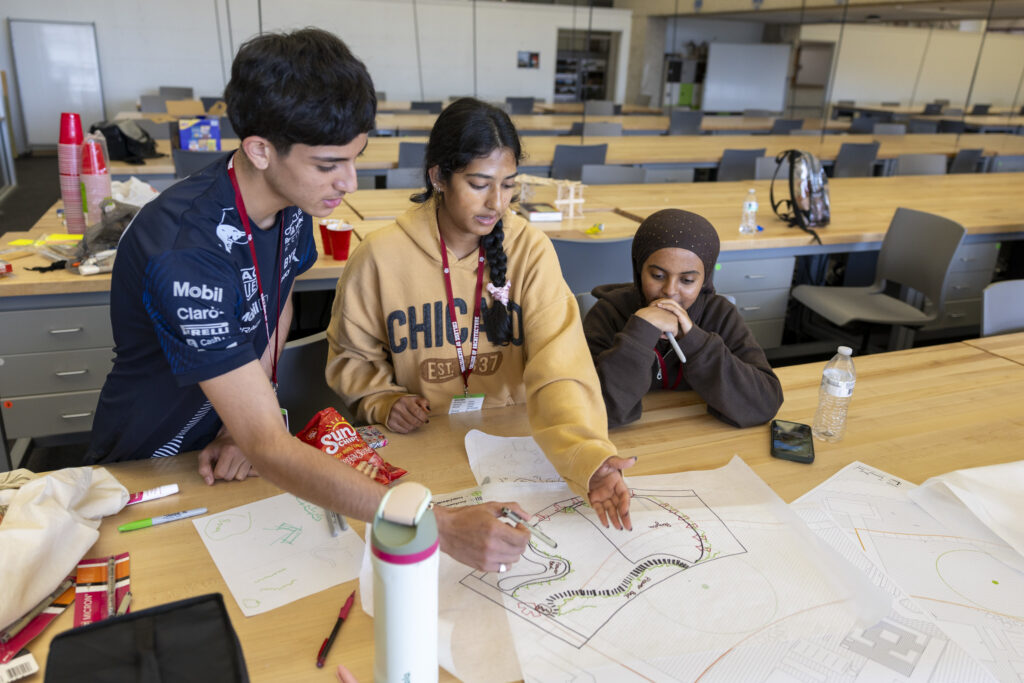
Meanwhile, in partnership with the Leach Teaching Gardens, landscape architecture students spent the week reimagining a real campus space with sustainability and community in mind.
But for some, the biggest transformation wasn’t in the garden — it was in how they saw the field itself.
Before camp, 17-year-old Brooks Parker said he initially thought landscape architecture was mostly about “the grass outside a house.” Parker said, “I’ve realized it’s more analytical. It’s about how people interact with the environment, which has made me love it.”
Parker said he’s most engaged when learning from passionate mentors, like landscape architecture Professor Chanam Lee. When Parker asked her to name her proudest project, he expected a famous design.
Instead, she shared how meaningful it was to help rebuild landscapes in China after an earthquake.
“She said it was her favorite because she was helping people,” Parker said. “That just made me really enjoy everything she has to say.”
And that admiration goes both ways.
“I know that the campers are supposed to feel inspired, but honestly, as counselors, we’re inspired by them,” said counselor Stacy Truong ’28. “I’m just in awe. I’m genuinely amazed with the hard work they’ve been putting in.”
A Taste of the Aggie Life
Despite the packed schedule, Camp ARCH offered more than academics.
A mid-week game night in the Langford atrium gave students a break with cards, board games and puzzles. After wrapping up final projects, the camp celebrated with a night out at Grand Station.
Students also lived in campus dorms and toured the campus through an architecture-focused lens. They experienced a week immersed in Texas A&M traditions, and many students saw themselves as future Aggies.
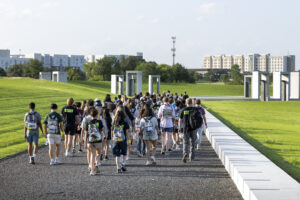
Wooten said her sense of belonging will play a key role in her college decision, especially since she’s never moved before.
“The fact that there’s so much community, so much tradition, like that makes me feel like I could see myself here,” Wooten said.
“Not only are we learning about the culture — which is just so welcoming and accepting and just wonderful — but you actually are learning about the program itself,” said Emily Stephens, 17.
Stephens was especially surprised to learn that Texas A&M is the only university in Texas to offer the Integrated Path to Architectural Licensure (IPAL) program. Meeting Emma Johnson ’25, a Camp ARCH alumna, licensed architect and camp instructor, made that discovery even more meaningful.
Johnson first attended Camp ARCH as a high school student and became the first architect in Texas to complete licensure immediately upon graduation through the IPAL program, which allows students to earn licensure in as little as six years.
This summer, Johnson returned to camp as a mentor. Stephens said meeting Johnson made the goal of becoming a licensed architect through IPAL feel achievable.
“I’ve gone on a few other college tours and I haven’t found a program that I like as much as this one,” Stephens said.
